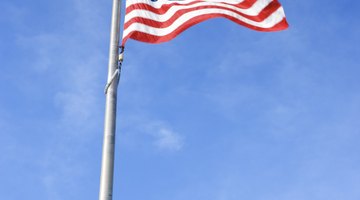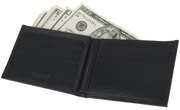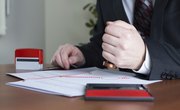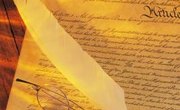The U.S. flag, as the national emblem, serves as a symbol of the nation and its government. A set of rules and advisory guidelines, known unofficially as the Flag Code, govern the use and display of the U.S. flag. The code is contained within the federal statutes known as the United States Code, Title IV, Chapter 1.
Advertising
The flag cannot be used for promotional or advertising purposes. That means you cannot add words, slogans, logos or other such designs to a flag that is publicly displayed, or associate it with visual advertising in print or broadcast media. The Flag Code also bars representation or display of the flag to promote any individual political candidate or group, or any private organization. It also bars anyone from writing on or autographing the flag.
Night and Inclement Weather
The flag cannot be flown at night unless a lighting system illuminates it. By custom, you may only fly the flag during daylight hours. In addition, you should not display or fly the flag during days of poor weather, unless you are using a flag made of all-weather material. The Code also states that it is a violation to fly a flag in tatters or otherwise in poor condition; these flags should be respectfully disposed of by burning.
Flying the Flag
The flag should never be flown upside down or beneath another flag; it should not be allowed to touch the ground or be carried horizontally. The union, or blue area, of the flag should be adjacent to the peak of the flagstaff, unless for ceremonial reasons the flag is being flown at half-staff. The flag always takes precedence at the top of the flagpole over the flags of states, cities or organizations, and when in a horizontal row of flags always should stand at the far right.
Clothing
It violates the Flag Code for the flag to be used as an article of clothing, or while draped over a statute, monument or other public structure. The code allows the flag to be draped over a coffin for the funeral of a service member or public official, with the union set at the head and left shoulder of the coffin. The flag may also be used as adornment on the uniform of a fireman, police official or military service member.
Related Articles
References
Writer Bio
Founder/president of the innovative reference publisher The Archive LLC, Tom Streissguth has been a self-employed business owner, independent bookseller and freelance author in the school/library market. Holding a bachelor's degree from Yale, Streissguth has published more than 100 works of history, biography, current affairs and geography for young readers.











